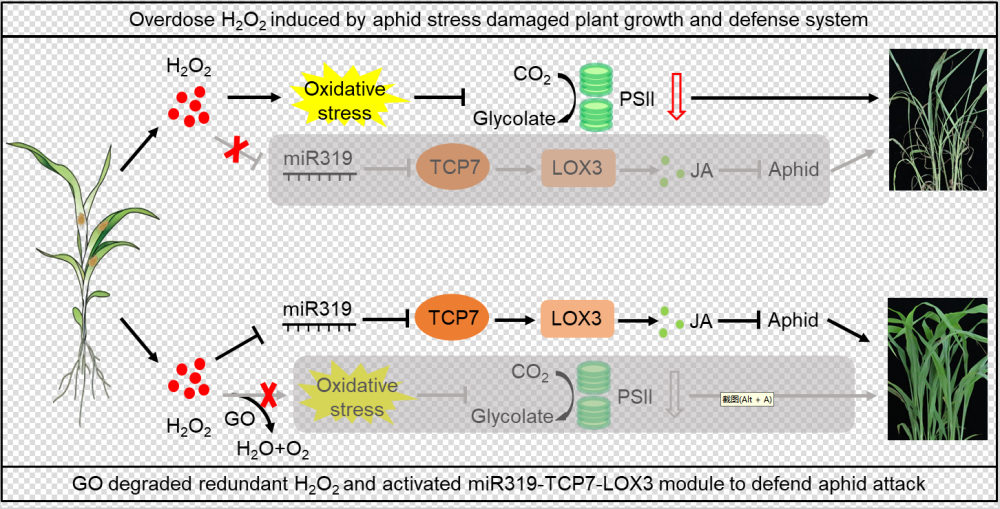Recently, the sorghum team of the Institute of Millet Crops has made remarkable progress in research on the molecular response mechanism of aphid resistance in sorghum. The research has clarified that under the stress of aphid, reactive oxygen species (ROS) burst causes oxidative damage to plant cells, thereby leading to the inactivation of the miR319-TCP7-LOX3 module, inhibiting the synthesis of the defence hormone jasmonic acid (JA), and ultimately causing plant death.
The study indicates that graphene oxide (GO) treatment can enhance the enzymatic antioxidant activities such as peroxidase (POD) and catalase (CAT), and simulate the activity of peroxidase to degrade excess H2O2, thereby maintaining ROS homeostasis. The low concentration of H2O2 inhibits the biosynthesis of miR319 and relieve its inhibition on the SbTCP7-SbLOX3 module, thereby promoting the accumulation of JA and enhancing the resistance of sorghum to aphids. This discovery provides a theoretical basis for an in-depth analysis of the aphid resistance response mechanism of sorghum.
The study was entitled "Graphene oxide enhances aphid resistance in sorghum via the miR319-SbTCP7-SbLOX3 pathway" and published in the Plant Biotechnology Journal (IF=11.2, CAS Zone 1 TOP).
The link of this paper :
https://onlinelibrary.wiley.com/doi/10.1111/pbi.70132

(Source from www.hebnky.com)